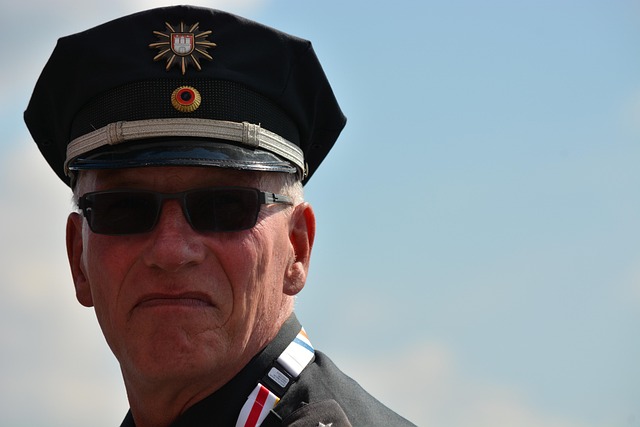Event security for executives requires a sophisticated, adaptable approach beyond standard crowd control. It involves intricate logistics, specialized teams, and scalable resources to manage high-profile events with multiple VIPs. Customized protection plans, effective communication strategies, and advanced technology ensure discreet, efficient, and proactive event security tailored to each executive's unique needs.
As event organizers, ensuring the safety of high-profile attendees, including multiple VIPs and stakeholders, is paramount. Scaling security teams for such events presents unique challenges that require a strategic approach. This article explores how to navigate these complexities by examining flexible team structures, sophisticated VIP protection protocols, efficient communication strategies, and innovative technology solutions. Discover key insights for managing event security for executives, ensuring both peace of mind and seamless operations.
Understanding the Unique Challenges of Executive Event Security
Event security for executives and VIPs presents a unique set of challenges that go beyond typical crowd control or general public safety measures. With high-profile individuals in attendance, the primary focus shifts to ensuring discreet yet comprehensive protection. Security teams must be adept at managing not only physical access but also potential threats like stalking, harassment, or assassination attempts, which require a heightened level of vigilance and specialized training.
Moreover, executive events often involve intricate logistics, including transportation, accommodation, and personal time management for VIPs. Effective event security involves coordinating with various stakeholders—from event organizers to local authorities—to ensure seamless movement, maintain privacy, and quickly address any unforeseen incidents, thereby demanding a scalable and agile security approach.
Building a Flexible and Responsive Security Team Structure
Creating a flexible and responsive security team structure is paramount when managing events with multiple VIPs and stakeholders. The ideal setup should allow for dynamic adjustments based on event size, complexity, and potential risks. This means employing a layered approach to security, with specialized teams dedicated to specific tasks such as close protection, crowd control, and logistics coordination.
A scalable team can be swiftly assembled by drawing from a pool of trained professionals, each equipped with unique skill sets. These may include ex-law enforcement officers for high-risk situations, event security specialists for general oversight, and medical personnel for emergency response. This adaptable structure ensures that events of varying scales receive appropriate security coverage while optimizing resource allocation.
Key Considerations for VIP Protection Protocols
When designing VIP protection protocols for events with multiple high-profile individuals, several key considerations come into play. Event security for executives and stakeholders should be tailored to the specific needs and risks associated with each VIP. This includes conducting thorough threat assessments, understanding personal security preferences, and implementing discreet yet robust security measures.
The event planning team must work closely with designated protection officers or personal security details to ensure seamless integration of their protocols. This collaboration ensures that every VIP’s unique requirements are met, while also maintaining a cohesive and effective overall security strategy. Additionally, flexible and scalable security solutions are essential to accommodate changing circumstances and unexpected events during the gathering.
Implementing Effective Communication Strategies for Stakeholder Satisfaction
Effective communication strategies are essential for ensuring stakeholder satisfaction in events with multiple VIPs, especially when it comes to event security for executives. Clear and consistent messaging is vital to manage expectations, convey important updates, and address any concerns or emergencies promptly. Implementing a structured communication plan can help streamline information flow between various teams, including event organizers, security personnel, and VIPs themselves. This might involve dedicated communication channels like secure text groups or instant messaging platforms, as well as regular briefings and debriefings to keep everyone aligned.
During high-profile events, timely updates are crucial. Security teams should communicate any changes in plans, protocol adjustments, or potential risks directly to stakeholders. For instance, if an unexpected security threat arises, immediate notifications to all relevant parties ensure a swift response. Additionally, providing post-event debriefings allows for feedback collection and future improvement of communication strategies, thereby enhancing overall event security for executives.
Utilizing Technology to Enhance Scalability and Efficiency in Event Security
In today’s digital era, technology plays a pivotal role in enhancing the scalability and efficiency of event security, especially for high-profile events with multiple VIPs and stakeholders. Advanced security software can streamline access control, allowing organizers to manage guest lists and monitor entry points remotely. This ensures a swift response to any potential threats or unauthorized access attempts. With real-time data analytics, security teams can predict and prevent disruptions, making event security for executives more proactive rather than reactive.
Furthermore, integrating AI-powered surveillance systems enables continuous monitoring of vast event spaces. These systems can detect unusual behavior, face recognition technology, and even predict potential risks based on historical data. This technological edge not only reinforces physical security but also aids in identifying and mitigating risks associated with executive protection, ensuring a seamless and secure experience for all VIP attendees.
Scaling security for events with multiple VIPs requires a strategic approach. By understanding the specific challenges of executive event security, implementing flexible team structures, and leveraging technology, organizers can ensure robust protection without compromising efficiency. Effective communication strategies are vital to stakeholder satisfaction, fostering an environment where everyone feels secure and valued. Adopting these practices is key to managing high-profile events successfully, catering to both guests and VIPs alike.
